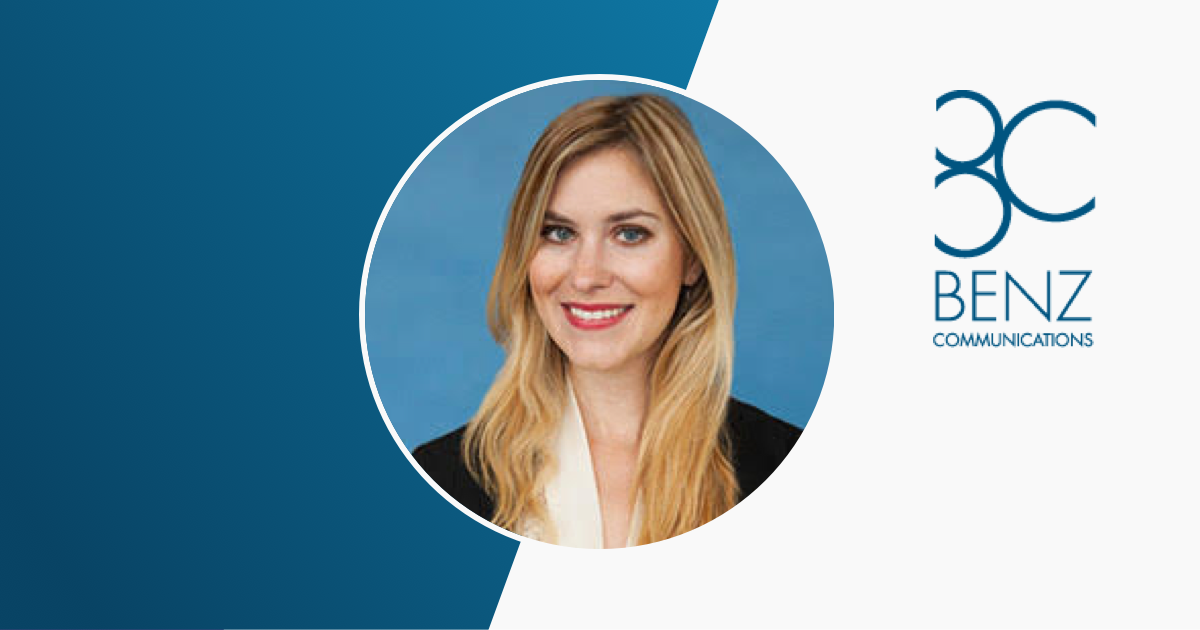Lindsay Kohler is a Senior Communications Consultant at Benz Communications. She’s fascinated by the application of behavioral economics to improve both choice architecture in benefit and HR plan design, as well as the use of appropriate communications, timing, and messaging to create behavior change in challenging industries like healthcare and finance. In this Q&A, we discuss the common themes that emerge in her conversations with employees, the best practices she follows when crafting a benefits communications package, and much more.
Can you tell us about your company and role?
Benz Communications is a marketing agency focused solely on employee benefits. The company was founded about 12 years ago and, since then, we’ve been honored to work with organizations in just about every industry to help them solve their top engagement challenges. We have a nice mix of people at our agency with traditional design and marketing experience, as well as a deep knowledge base in healthcare and benefits.
My role as a Senior Communications Consultant is to oversee the strategy of the engagements to make sure we’re 1.) defining the company’s goals very clearly and 2.) meeting those goals with the right metrics in place. I also help oversee creative deliverables once we get into the tactical side of producing the campaign.
What’s the most rewarding part about your job?
Every time I run a focus group or do one-on-one interviews with employees, I’m reminded of why we do the work that we do. It can be easy for agencies and employers to talk about employees in the abstract and forget to have real conversations with the people they’re creating solutions for. When you do, you get a really in-depth look into what their problems are, what their goals are, where they’re getting stuck, and what they care about.
Are there any common themes that emerge in these conversations with employees?
Every group we speak with is really different — especially since Benz Communications doesn’t only focus on healthcare benefits, but also on financial benefits, family leave, etc. However, if I’m speaking specifically to healthcare, I would say a common theme is the complexity of navigating the system. Even if someone is motivated to act in healthcare, they frequently don’t know what to do because the experience isn’t well designed.
Inertia and status quo bias are also common themes we observe. Humans naturally have an emotional preference for the way things currently are, so asking employees to make a change in their healthcare is actually a really big ask. So people are weighing those potential benefits against potential risks, and the former has to vastly outnumber the latter for people to make a change. When there’s a lot of ambiguity, it makes it difficult to make decisions, so it’s easier to do nothing, even if that’s not in your best interest.
This understanding of human psychology actually drives a large part of our business. We work a lot with applying behavioral economics principles to our work because getting people to engage in anything is hard — but when you’re asking people to do stuff with their health and finances, it’s really hard because these are two areas where we’re so ingrained in our habits. It’s also a tradeoff between doing something that feels good now vs. investing in something that will benefit my future self.
If you could wave a magic wand and make a single change to the healthcare benefits space, what would it be?
Well, I would love to fix healthcare as a whole, but I know that’s a really broad answer. So I’m going to focus on something within the benefits communication space that I personally want to fix: I want the online experience for benefits to be like Amazon — one website where all the information and personalized data lives, and where the experience is transactional and simple.
So on my phone, I would be able open up a single app and check my 401K account, see how much money is left to meet my deductible, and have a refresher on what child care benefit I have. I believe when that exists, it’s going to be a game changer in terms of taking away the biggest barrier of complexity and inability to act.
What are the best practices you always follow when crafting communication packages for your clients?
We’ve put a lot of thought into how to codify the art of communications because, a lot of times, it can feel a bit fluffy and qualitative. But because we’ve been working with so many clients for over a decade across tons of different industries, we found there’s a pattern when it comes to communicating benefits. The way that we think about it is in a 10-key framework, which includes:
- Strategy
- Brand
- Website
- Feedback
- Simplicity
- Multi-channels, year round
- Targeted messaging
- Employee experience
- Budget
- Partners
You can learn more about each of these keys in our three-ebook series. How we apply these keys to each client is a similar process, but the results and recommendations we come out with vary widely because every company is very different.
How do you stay up-to-date on the latest trends in the industry to ensure you’re bringing clients the most informed recommendations?
You have to read a lot. You find the best news aggregators out there in the HR world and set your reminders. One of the most common questions I get when I meet with a client or speak at a conference is “what’s new?” Everybody wants to know what everybody else is doing, and people look to our company for that guidance. I wish there was an easier answer, but the reality is that you just have to read everything. We also share knowledge within our team — we’re lucky to have tons of really smart consultants at Benz Communications, and everyone is great about broadly sharing their knowledge.
When crafting a communications strategy, how do you decide what type of collateral to produce? Similarly, how do you choose which metrics to measure?
It varies wildly depending on the client and makeup of employees. We don’t create any sort of template or toolkit. For us, every campaign is totally custom and unique based on the client and their goals. So the collateral can be incredibly diverse, whether we’re building websites from the ground up, placing Facebook ads, or creating digital screens and signage. For instance, if we’re working with a retailer or manufacturer, we might have more print and ad-hoc guerilla collateral. Since they don’t have work emails, but they do have a 10-minute stand up before every shift, we’ll get some speaker notes into the manager’s hands as well.
With regard to metrics, again, it totally depends on the client and the goals. For example, we once ran a campaign for a client who was trying to increase the number of employees with high enough HSA balances to open investing accounts and were missing out on that extra tax advantage. We ran a targeted campaign, and in that same month, there was a 30% increase in the number of people that opened up investment accounts. Telling these stories of real-life examples is invaluable, but it doesn’t happen unless you measure it. A lot times, people don’t want to follow through on measurement because it’s challenging and time consuming, but the results definitely pay off.



